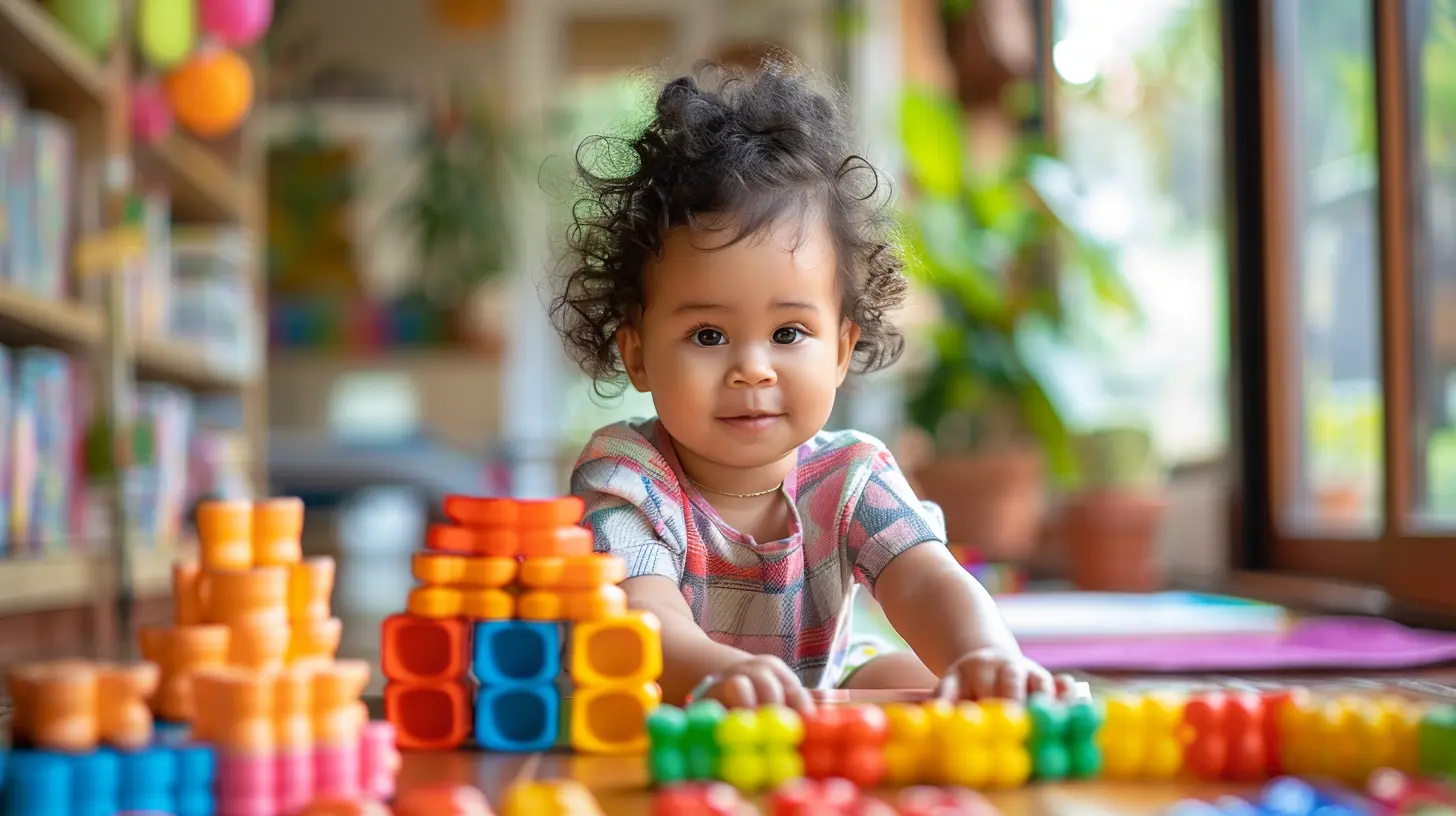Helping Your Baby Learn to Understand Cause and Effect
20 November 2025
Watching your baby grow and take in the world with wide eyes is one of the most magical parts of parenthood. You know that every coo, giggle, and babble isn’t just cute — it’s a part of their learning journey. One of the most important milestones your little one will reach early on is understanding cause and effect. This essential cognitive skill forms the basis for critical thinking, problem-solving, and communication later in life.
So, how can you help your baby grasp this big concept with their tiny hands and curious minds? In this post, we’re going to unpack everything you need to know about helping your baby learn to understand cause and effect. Let’s dive into the whys, the hows, and the everyday ways you can support this development — all while having fun and bonding with your baby.
What Is Cause and Effect, Anyway?
Let’s break it down. Cause and effect is the understanding that one action leads to a specific result. Like when your baby kicks a rattle and it makes a noise — the kick is the cause, the sound is the effect.Now, think about how much of our daily life depends on this concept. We flip switches to turn on lights, press buttons to start machines, and speak words to get responses. For a baby, every waking moment is an experiment in figuring out how the world works. And cause and effect is the golden key to making sense of it all.
Why Is Understanding Cause and Effect So Important?
Great question. This skill is more than just a cute “look what happens when I throw my spoon” moment. It’s the building block for:- Language development: Learning that sounds (like "mama") can get attention
- Problem-solving: Figuring out how to reach a toy or open a box
- Social interaction: Understanding that actions affect others' feelings
- Motor skills: Knowing that pushing a button results in a fun light show
When babies experience consistent results from their actions, their brains start wiring up for deeper thinking. And that, my friend, is pure baby genius in the making.
When Do Babies Start to Understand Cause and Effect?
The short answer? Around 3 to 6 months of age. That’s when you’ll first notice your baby starting to make connections between actions and outcomes. But don’t worry — it’s not an overnight thing. This understanding gradually deepens over the first few years of life.Let’s look at how this develops by age:
0–3 Months: The Accidental Discoveries
At this early stage, babies may accidentally flail their arm and hit a toy hanging over their head. It’s all reflex and chance at first. But you’ll see their eyes light up when the toy moves or jingles. Even if they didn’t mean to do it, they’re starting to take notice.4–6 Months: Repetition Kicks In
This is when babies begin to repeat actions that get interesting results. They push a button on a toy and it lights up? They’ll try it over and over — you're now witnessing early scientific exploration.6–12 Months: Intentional Testing
They throw food off the highchair — not just once, but twenty times. (Yes, it's messy, and yes, it's on purpose.) At this point, they’re testing your reactions and the consequences of their actions.12+ Months: Complex Understanding
As toddlers, they start applying this logic to more complex things — turning knobs, unlocking latches, or stacking blocks to reach something. They begin to understand delayed or less obvious effects, which means their little brains are firing on all cylinders.
Everyday Activities That Teach Cause and Effect
You don’t need fancy gadgets or expensive toys to help your baby grasp cause and effect. The best learning happens during everyday life — right there in your kitchen, bathtub, or backyard. Here are some awesome (and easy!) ways to make it click for your little one:1. Play With Cause-and-Effect Toys
You’ve seen them — the ones that light up, sing, or spin when pushed or pulled. Toys like:- Pop-up toys
- Busy boards
- Jack-in-the-boxes
- Activity cubes
These are not just fun; they’re lessons wrapped in bright colors and catchy songs. Babies learn that when they push, twist, or pull — something happens. It’s a satisfying loop that makes them want to try again.
2. Drop It Like It’s Hot (Or Not)
Babies are notorious for dropping things. It’s not just mischief — it’s science. When they drop a spoon, it clinks. When they drop a banana... well, it splats. These experiments help them figure out object permanence, gravity, sound, and your reactions.Pro tip: Instead of getting annoyed at the 47th dropped item, say something like, “Wow! That made a big sound. Let’s try it again!” It keeps things positive and educational.
3. Water Play Magic
Pour water from one cup to another. Splash a little. Add bubbles. Water play is a great way to show cause and effect. Babies see the immediate reaction of their actions — splashes, spills, or pouring — and it’s sensory heaven.You can even introduce concepts like “If we tilt the cup, the water comes out,” which is a soft introduction to scientific thinking.
4. Peek-a-Boo (Yes, It’s Educational!)
Peek-a-boo teaches more than just giggles. Your baby starts to learn that even though your face disappears, it comes back. It's an early nod to cause and effect, laced with object permanence. Plus, it’s a simple way to connect, bond, and teach — all in one.5. Music and Instruments
Banging on a drum, shaking a rattle, or pressing keys on a toy piano — each action produces a unique sound. These cause-and-effect scenarios are packed with potential.You could even create a mini music station at home with pots, wooden spoons, and homemade shakers. Let your baby explore the noise economy.
6. Interactive Books
Lift-the-flap or sound books are fantastic tools. When your baby lifts a flap and sees a surprise or presses a button and hears a sound, they’re connecting their actions with an outcome.Storytime becomes more than just reading — it becomes a hands-on learning session.
Helping Your Baby Connect the Dots
So how can you, as a loving parent, support this learning without turning it into a classroom?1. Narrate Everything
Talk through what’s happening. Use simple cause-and-effect language like:- “You pressed the button, and it made music!”
- “You splashed the water, and it got on the floor.”
- “You dropped your cup, and it rolled away.”
Babies are little sponges. Even if they can't talk back yet, they’re listening — and learning.
2. Celebrate Their Discoveries
Every time your baby figures something out, make it a big deal. Clap, smile, say “Wow!” Your enthusiasm encourages them to repeat the action and reinforces their learning.3. Be Patient With Repetition
Yes, it might feel a bit like Groundhog Day when your baby opens and closes the same drawer 100 times. But that repetition is key to learning. They aren’t bored — they’re mastering a connection.Let them explore safely and try not to rush them through these processes.
4. Set Up Safe Exploration Zones
Create areas where your baby can test things out freely. Think soft mats, baby-proofed cabinets, and open-ended toys. The more they can do safely on their own, the more they’ll learn about how their actions affect the world.When to Be Concerned
As a parent, it’s natural to worry a bit (okay, a lot). If you notice that your baby isn’t engaging in cause-and-effect play by around 12 months — like not responding to sounds, not trying to interact with the environment, or not exploring toys at all — it may be worth bringing up with your pediatrician.But keep in mind — every baby develops at their own pace. Some are cautious observers, while others are eager experimenters. What matters most is that they’re curious and engaged.
Final Thoughts: You're Your Baby's Favorite Teacher
Here’s the good news: you’re already doing more than you think. Every smile, word, and playful interaction helps your baby understand the world a little better.Helping your baby learn to understand cause and effect doesn’t require special training or tools — just time, patience, and love. It’s in the peek-a-boos, the dropped spoons, the giggles when water splashes. These tiny moments? They’re the foundation of your baby's understanding of how the world works.
So go ahead — embrace the mess, laugh at the splats, and keep talking through those “Aha!” moments. You’ve got this.
all images in this post were generated using AI tools
Category:
Infant DevelopmentAuthor:

Austin Wilcox

